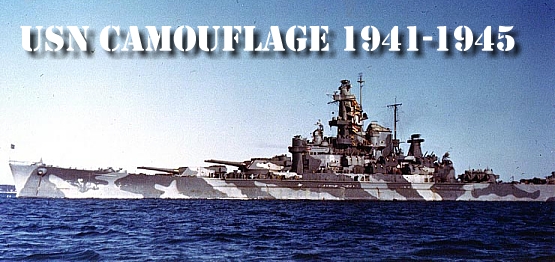Surfaces and corners of surfaces useful in estimating
course angles may be broken-up by means of large splotches of
paint. These should not be smaller than the resolving power of the
eye at the ranges at which it is desired to create confusion. The
resolving power of the human eye by day is about two to three minutes of arc
depending on the color contrast. Very small blotches are
ineffective. The total area covered by the pattern should not be more
than about 1/3 of the area of the surface in question. The splotches may
be regular or irregular. The color of the splotch should be chosen from
the three Blue Gray colors if Plate 12 to contrast with the color of the
surface. Thus if the surface is Sea Blue the splotches are Haze Gray,
and vice versa; if the surface is Ocean Gray the splotches are Sea Blue.
the edges of the splotches may either be left sharp, or blurred into the
surface color, or partially sharp and partially blurred. No exact form
of spots can be specified. Some examples are given in Plate
19. It
is probable that almost any spot pattern devised at random, within the above
restrictions of size, relative area, and color contrast, will on the average
be as effective as any other pattern.
The camouflage painting need not be exact or carried
into corners. Small gear, wires, rigging, and areas permanently in
shadow, as under boats, etc., need not be painted with the camouflage
colors. There is no objection to exact or careful painting which may be
desired for the sake of good appearance at close range.
All bright or shiny objects, no matter how
insignificant, shall be painted, covered, or removed.
Glass windows shall be covered or removed, especially
during the day in sunny weather, and at night when anticipating searchlight
discovery. Insofar as conditions permit, similar precautions shall be
taken on airport lenses.
